

The European Elections will be held four weeks from now, and they'll use an electoral system that's more complicated than simply "the person with the most votes wins".
The system used in Britain (and, indeed, most of the EU) is party-list proportional representation using the d'Hondt method. Wikipedia gives a detailed description of the mechanics of the system. However, people without a background in maths might have trouble following it.
So, here's a simpler explanation.
When you vote for a party list, you're giving one vote to the first person on the list, half a vote to the second, a third of a vote to the third, and so on. The people with the most votes win.
For example, let's take a look at the results of 2009's European Election in Scotland.
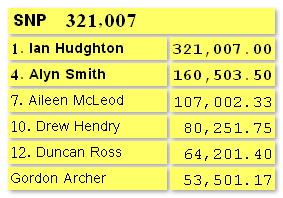
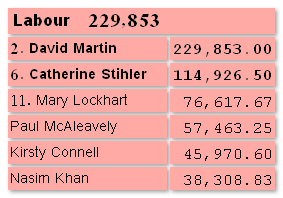
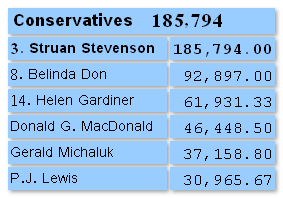
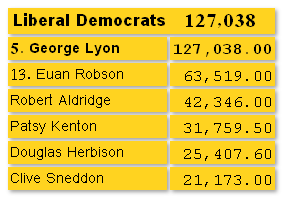
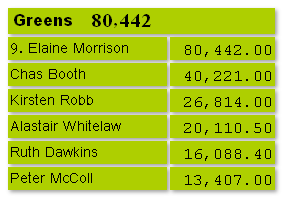
I've numbered the top 14 (15th and beyond includes candidates for parties not listed here). Scotland elects 6 MEPs, so the people numbered 1 to 6 were elected.
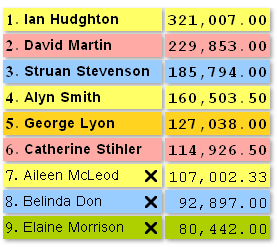
But what about tactics? That's where things get more complicated.
Proportional representation is supposed to remove the need for tactical voting. However, the way it's done in the UK isn't as proportional as it could be. The country is divided into several constituencies, each of which only elects a few MEPs. The fewer candidates to be elected, the less proportional it is, and the more tactical you can be.
For example, I've received a leaflet from the Greens claiming that they can beat the Liberal Democrats and win Scotland's 6th seat.
You can see in the results above that George Lyon of the Liberal Democrats came 5th, not 6th. You'll also notice that Elaine Morrison of the Greens came 9th, so doesn't appear to be much of a contender for 6th. However, it's not that simple.
While Elaine Morrison came 9th, the candidates that came 7th and 8th did so with fractions of votes. So, while the SNP's Aileen McLeod was only 7,924.17 votes away from 6th place, the SNP would have needed 23,773 more votes for her to actually have won the 6th seat. The Conservatives' Belinda Don was 22,029.5 votes from 6th place, but they'd have needed 44,060 more votes for her to have won the seat. Green Elaine Morrison would have needed 34,485 more votes to win the seat. Therefore, despite being in 9th, she's actually in a better position than the 8th-placed Conservative.
Meanwhile, from the Liberal Democrats' perspective, they would have had to have received just 20,036 fewer votes to have come 7th and missed out on a seat. It's very likely that this will happen this year.
So, the Greens are well-placed to win the 6th seat, but not quite as well-placed as the SNP. However, the Greens stand to gain a lot if they can get out the message that a vote for the Liberal Democrats would be wasted. Which, I imagine, is why they phrased their leaflet the way they did.